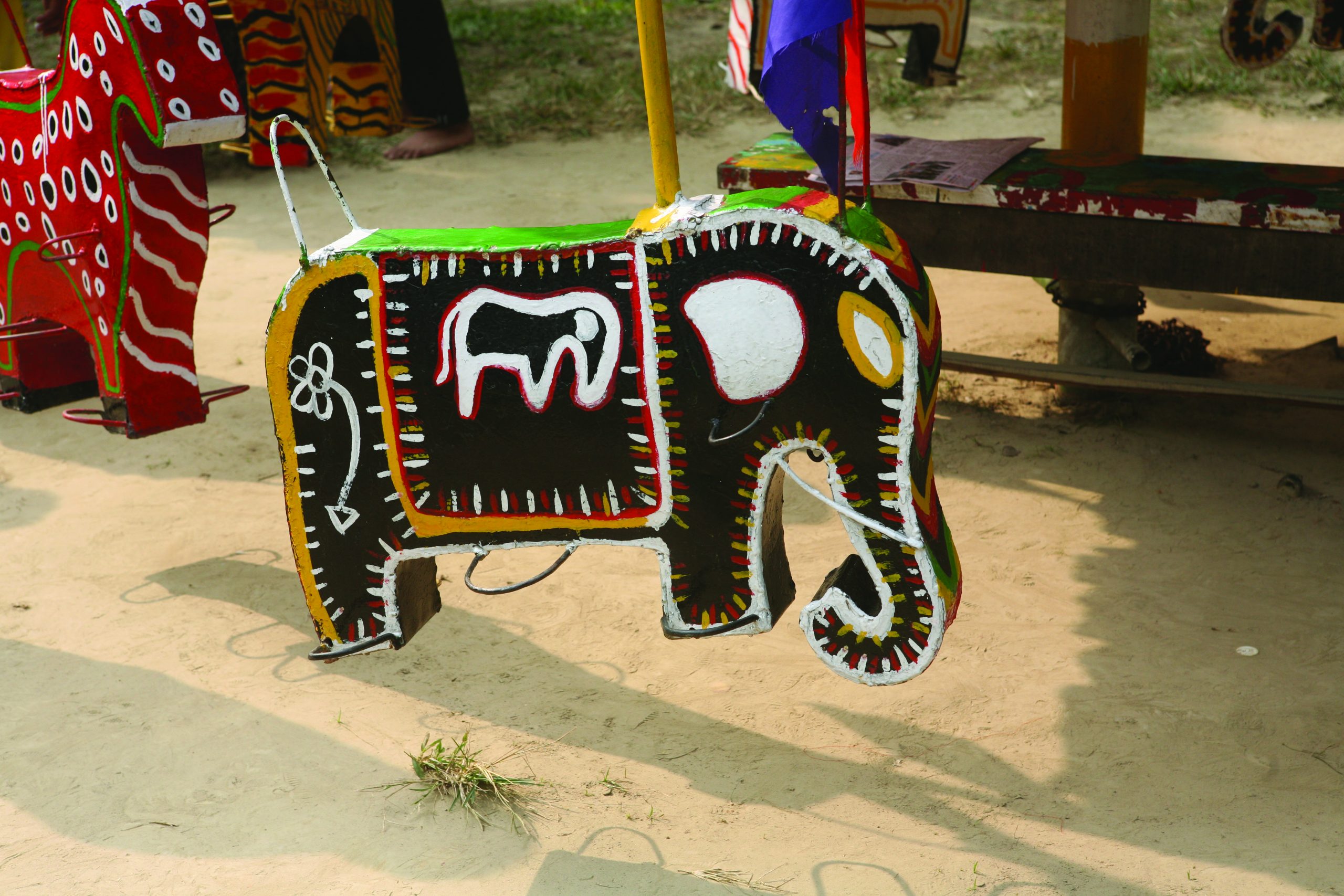
A childhood memory reborn. Photo: Samit Das, 2021
Drawings on a wet playground
When I was young I had an art studio in my family’s Jamshedpur house on the ground between two verandas. That was my playground to play with visual imagination. I had some white chalk, a piece of wet cloth and the afternoon sunlight for company. Spending quiet afternoons drawing during school holidays became part of the early memories of my imaginative world. I do not know why I never had the urge to scribble on the walls, and it was because of this that there were no protests from my family at my drawing in this part of the house. The damp floor, my early playground, was perfect for making more permanent chalk drawings. Unknown to me, this was an early lesson in archiving. My memory of drawing with white chalk on the grey surface of the open veranda is still fresh.
That sensibility still thrives in me, just like the greys, whites, and blacks that dominate my art.
While drawing on the ground I sensed the sun, the rain, the little hills of rock, and the trees around me. This was because our house was in the middle of a small green spot surrounded by rocky hillocks and trees. The memory of that enduring journey remains alive within me.
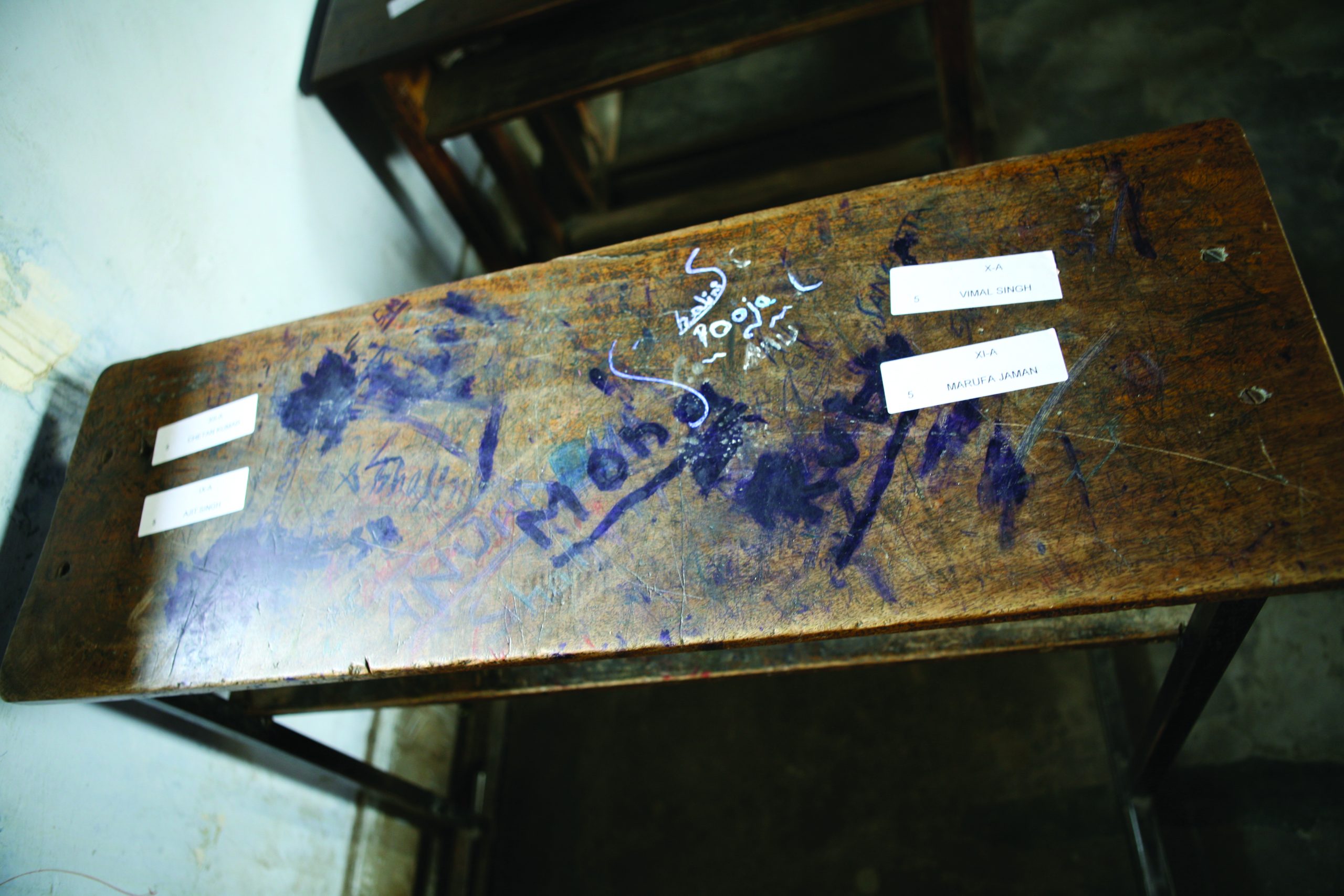

Graffiti on a school bench by High School students, Delhi.
Photo: Samit Das 2012-13.
An imaginary ground and singular performer
In my childhood I liked to collect bits and pieces of paper. My collection included everything from handmade paper packets, calendars and newspapers to the pages of various magazines. Most of them contained pictures that I wished to reproduce in my own way. Even if I were not always able to reproduce them correctly, I would experience an inner connection with them through the process of trying. I still remember a greeting card with etching prints, photo essays by famous photographers in old magazines, Alpona patterns1 and blueprints of machine drawings. A box of materials kept me alive for a long time; these often became subjects for my paintings later on in life.
My attraction towards painting developed as I grew, and my collection of magazines, books and newspapers started to grow. The old book market of Jamshedpur, my birthplace, helped me expand my horizons, and I seemed to fall in love with the smell of old paper. Later in life, this very attraction pulled me to the doors of archives related to art. Gradually I started to build up a collection based on my personal research needs. This collection consisted of old books and newspapers, film negatives, slides, old deeds, and digital books. The journey of this collection was centred around my interest in art and helped me in my practice.
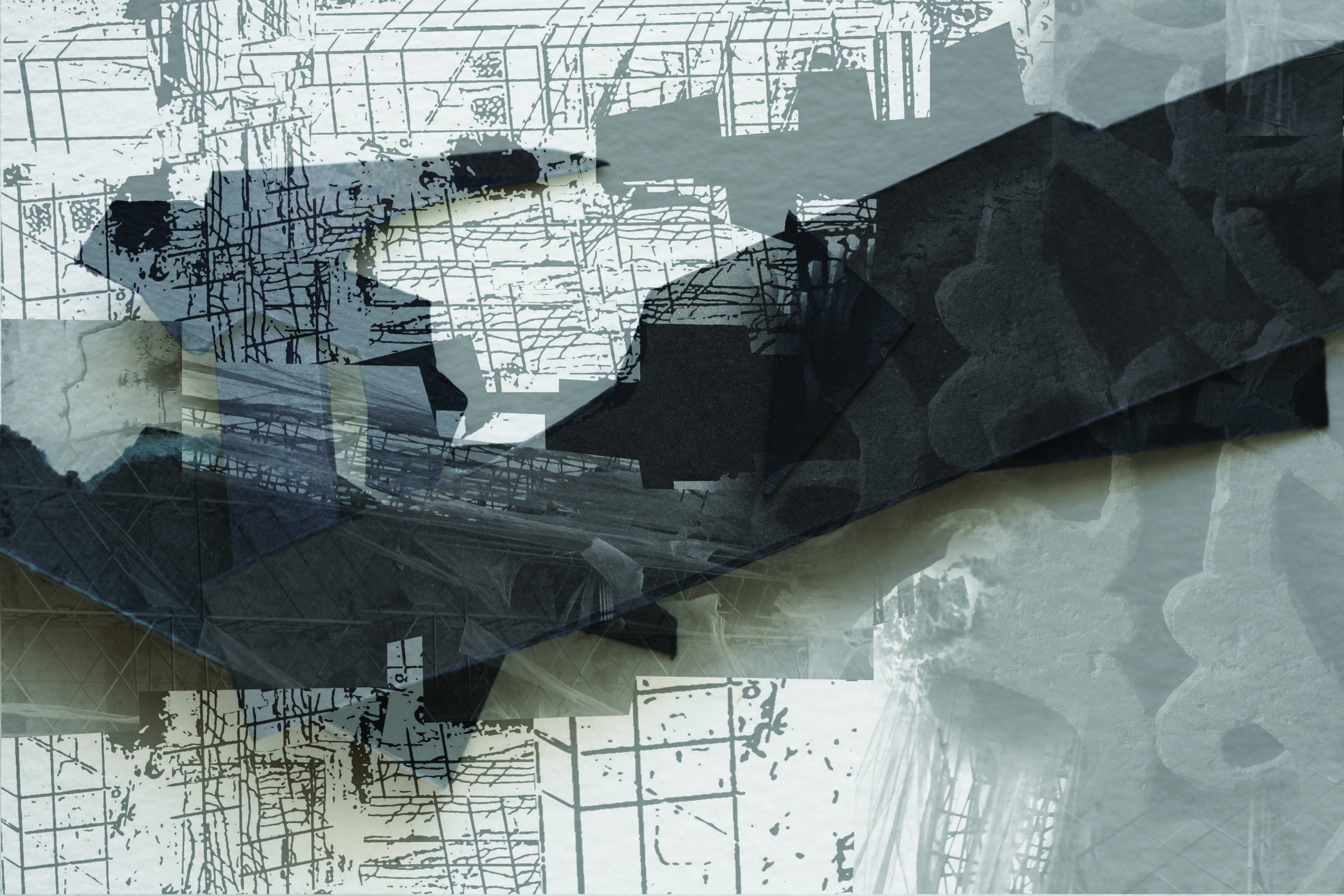
Samit Das, Architecture of Silence, 2018-22.
Mixed-media collage.
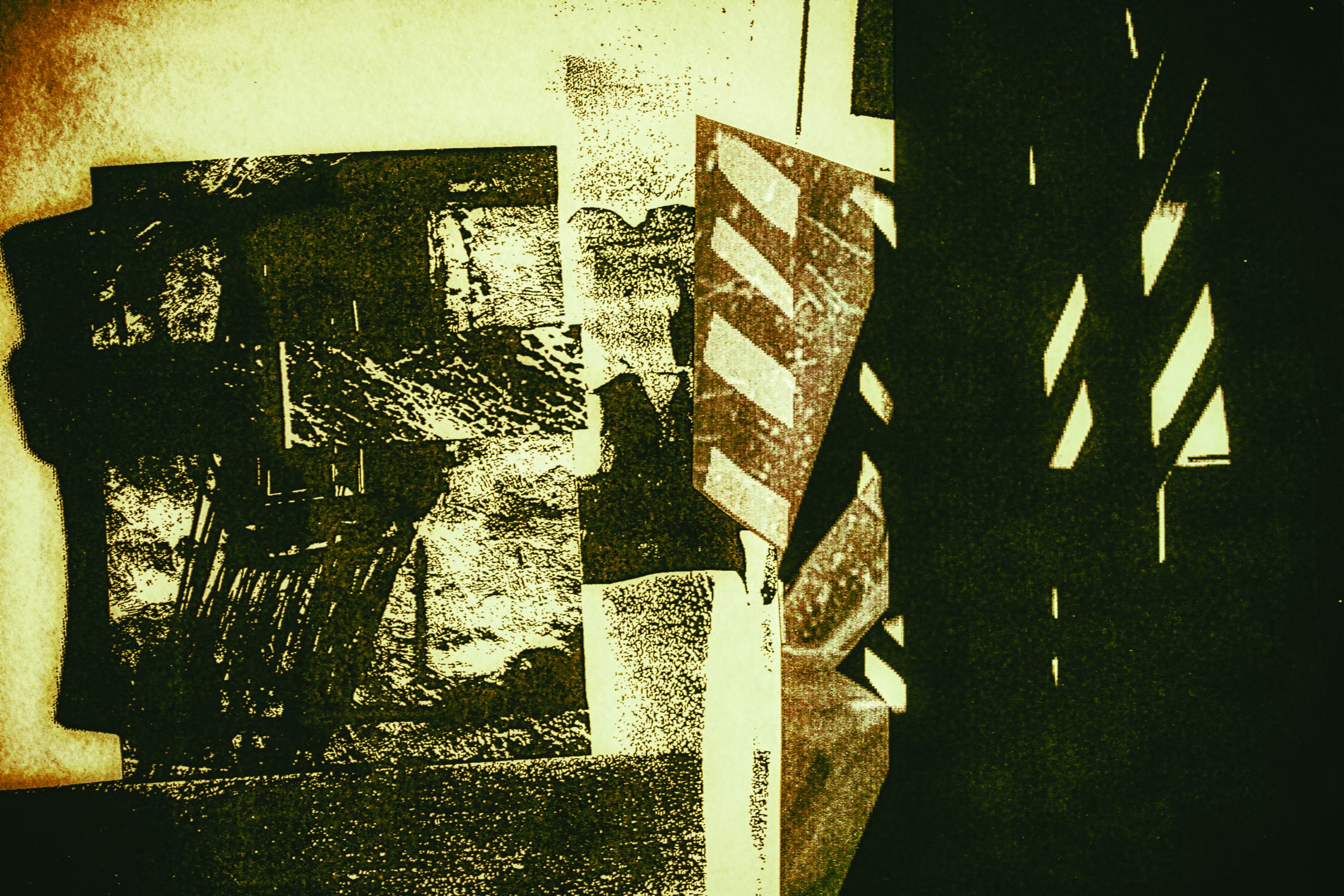
Samit Das, Architecture of Silence, 2018-22.
Mixed-media collage, 30 x 20 cm.

Samit Das, Architecture of Silence. Life is also about Silence
with many layers, 2018-22. Mixed-media collage.
The Architecture of Silence
A creative moment that is intuitive and an active space creates a dialogue between ‘self’ and ‘me’—a consciousness of a particular kind associated with dynamism. Art is nothing else but this spontaneous activity of the mind. Through the diversity of the mental flow, there is a diversity of the creative attitude of the mind, which alone is responsible for creating powerful language in the visual arts. Even if someone does not speak objectively, through imaginative representation and creative intuition of the mind, they may yet successfully communicate.
One of the best examples of an architecture of silence is the Rothko Chapel in Houston:
The colours in the Rothko paintings are those of blood and wine. As you stand in the chapel they are close, very close, even warm and comforting. Yet they do not oppress…Rothko created a religious environment with 14 large canvasses, distributed around the walls of an almost octagonal structure. The chapel…was dedicated on February 27, 1971, as an ecumenical house of worship.2
It is a dedicated space to feel deep silence:
Entering through two black doors, visitors to the Rothko Chapel are surrounded by 14 colossal black paintings installed in an octagonal room. A closer look reveals that they are all distinct, and none is in fact pure black, instead containing varying colours and textures in their shadowy surfaces. Some appear like nightshade; others have a deep oxblood tone. A skylight overhead gives the light a constantly changing quality, so as clouds pass or the sun sets, the paintings continue to transform…The non-denominational space is both a respite and a masterpiece of modern art. It was among the last works finished by the artist Mark Rothko.3
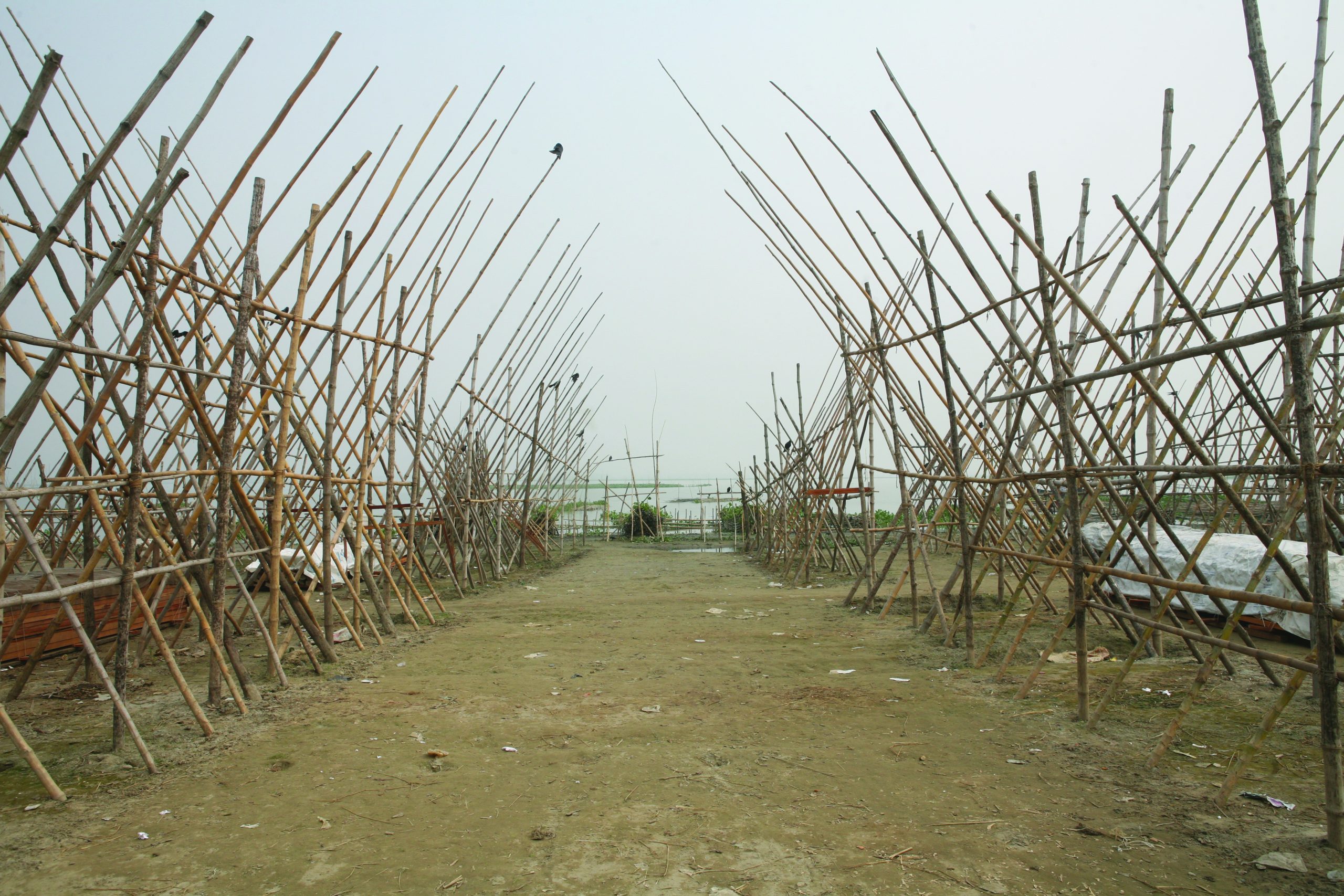
Architecture of Emotions: Never gets dissolved in air.
Photo: Samit Das, 2011.
Apart from that, my engagement with urban spaces goes beyond the level of noisiness, where I can recreate enduring spaces. It is an eternal silence when an airplane flies above cloud level. The architecture of silence is beyond mere concrete structures.
Cities and History of Materiality—Anatomy of Artificial Intelligence
The human organ, the brain, and its activity are no longer independent of daily life. All are alive, living, interveining; AI4 and contemporary dreams in the city have transformed its own logical structure. The definition of success and survival is constantly shifting. It moves and creates new challenges; these complex turbulences are also a contemporary reflection of self-identity.
The pandemic5 is teaching us about new definitions of global and local sustainability. Geographical world-mapping has a new purpose. The virus travels worldwide without a concept of borders.6 Still, humans cannot do the same, and physical reality has shifted in many ways towards augmented reality.7
Uses of materials and values assigned to them have complex explanations. There are major differences between the Asian world, Europe and other parts of the world. Asian products so far do not mention ‘made for Asia’ or ‘made for the Global South.’ However, European products have long-since8 adopted the logo ‘CE’, meaning conforming to European standards.9
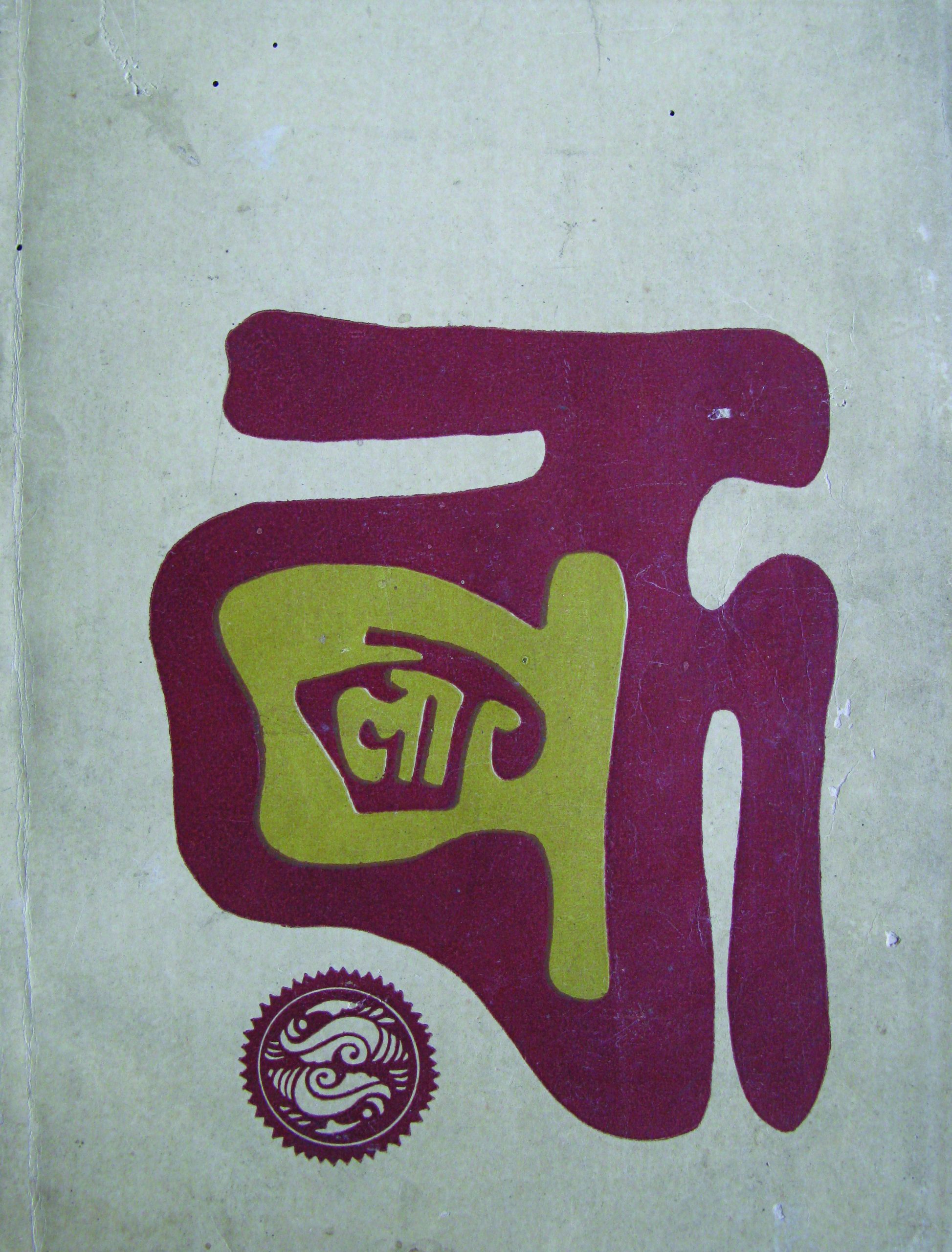
Cover page of Annual Art Journal. Published by Government College of Art and
Crafts. Kolkata during 1960s. Collection of Samit Das
Apart from manufactured products, locally available material has a lot to say about the region and soil. Any material is also a voice of tones which connect society. Using material in art is completely personal and depends on the artist’s concepts and content.
Day-to-day city structures are wrapped in large LED screens or signages to the point where city dwellers almost forget the actual character of the buildings. The original building materials remain hidden and camouflaged. It is a new visual element in many mega-cities of the world. In India, unauthorised colonies and makeshift structures have grown endlessly. Most of the mega-cities in India are in continuous movement, never standing still. Both the LED and makeshift structures create new visuals and an unfamiliar abstraction.

The analogue sound-recording, during film shooting in Kolkata. Image challenges
the digital era. The curiosity is a source of enduring energy of human brain.
Photo: Samit Das, 2009
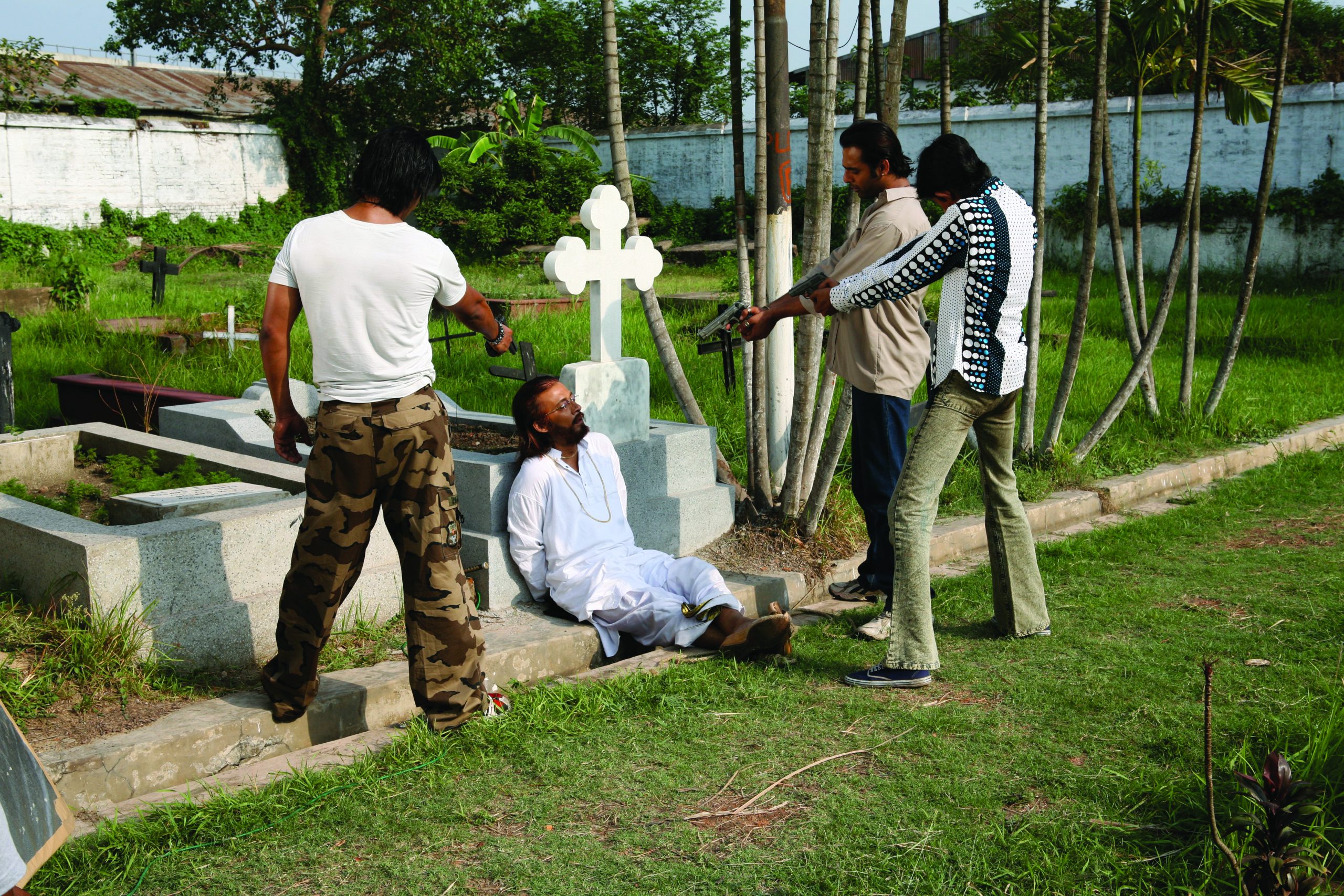
A film shoot at a graveyard in Kolkata, West Bengal, India.
Photo: Samit Das, 2011
Quick losses fading from the mind…
Physical objects and substances are unique in form, but they also exist in their particular locations in space. The entity operates on a resting surface, absorption and emission of light rays with varied dimensions. The changing airflows, sound reflection, conduction of heat and other processes depend on its surroundings. These interactions are essential to the agency and presence of a physical object. This process might reveal a new critical view of cities as live art installations.
The digital image can be made visible in any space. These variations may not create uniqueness. This journey may require an effort to simulate the physicality of objects with actual devices. Others mimic presential effects with artificial intelligence and algorithmic graphics, which are capable of being continually produced without repeating over a human lifetime.

Samit Das, Archaeology reveals the truth and dissolves human ego. It unlocks the
closed door of history, 2002-21. Digital and paper collage.
The augmented space and new abstraction in contemporary art
This series of images investigates the complex relationship between physical objects and facts of cities. The idea of new brain-power mapping forces computer-generated visuals to find a quick resolution in practical life! This photo essay is to intervein a lost aesthetic interest in architectural materials, objects and new meanings of the past. With a unique sense of material history yet without opposing a future corporatist in a touch-less ether, we can rebuild technology that augments the real rather than replacing it. This study can expose sharp tactile outputs parallel to the palpable sensory input that interactive artworks grow from the human body and mind and its further scope. AI-based programs are also creating new abstract languages in contemporary art. These are noticeable changes that have raised a critical dialogue between the virtual spaces of cities and digital forms of reinterpretation.
My inspirational words and influences
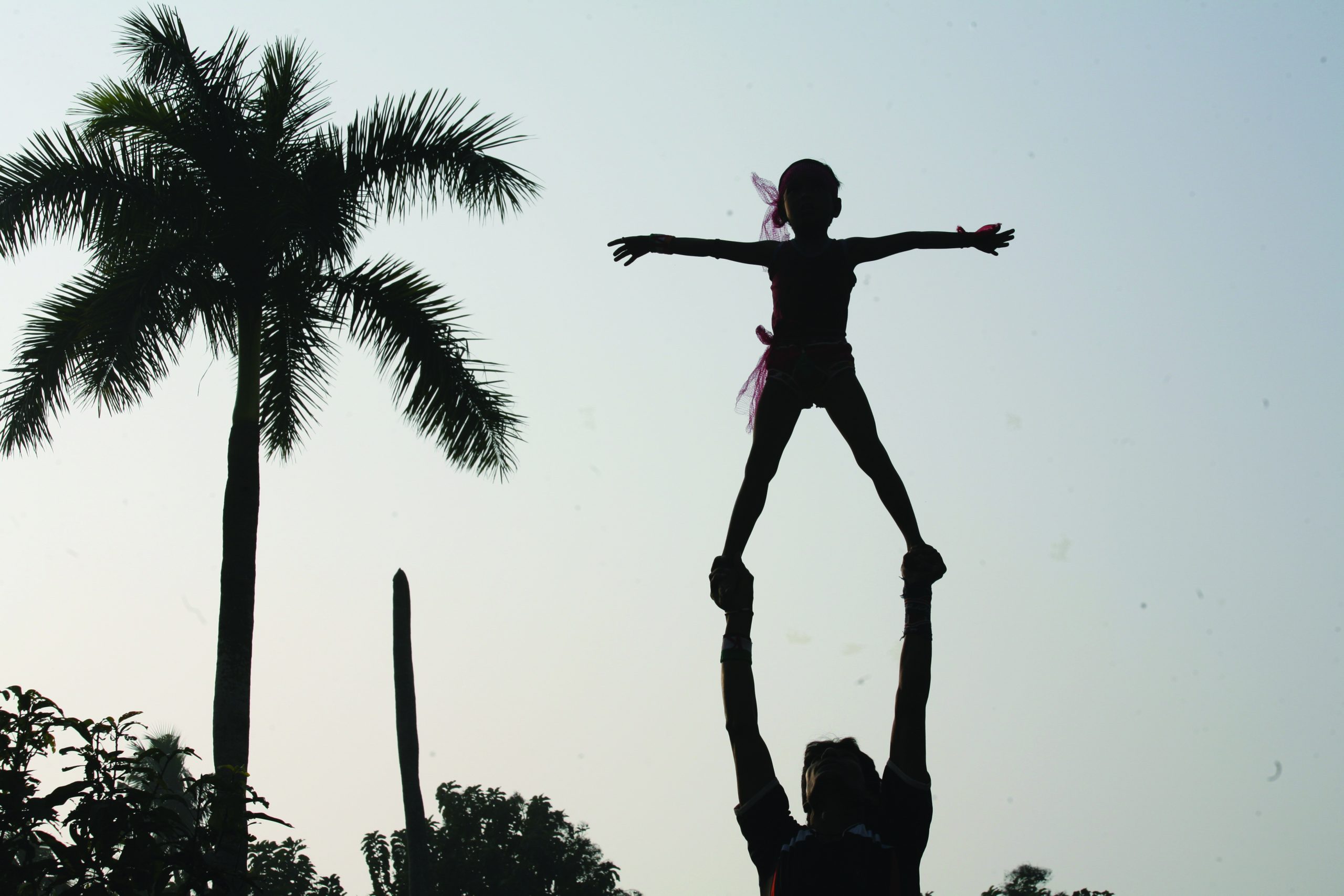
Playground can be formed anywhere: An innocent mind
never draws fixed lines! Photo: Samit Das, 2014.

A true support is a source of enduring energy in any form of art.
Rainbenshey Performance in Bengal. Photo: Samit Das, 2014
Every playground of life and art has close connections. There are many moments when self-realisation takes the journey further. The playground always opens a new door for learning. It is essential to continually learn new approaches; the teacher orders and encourages this kind of mindfulness, which is the heart of understanding. Inspirational words appropriate to psychology and culture wake up the society they serve, enriching our minds, standing and aiding us in our explorations.

Street performers walking on stilts. Murshidabad, India.
Photo: Samit Das, 2014.
The learning mode has varied aspects, from inspirational words to practical execution. Inspirational words never form in a day. Instead it takes ages to attain a more profound sense of philosophy. The iceberg strengthens once it creates a meaningful bridge between art and life. The meaning of education realises self-experiences in connection with the past and present.
Understanding inspirational words that may make the artistic journey more refined is essential. This lexis may not have direct reflections on artistic languages. Still, it helps us to expand the horizon of the playground, which may exist only in the mind-scape.
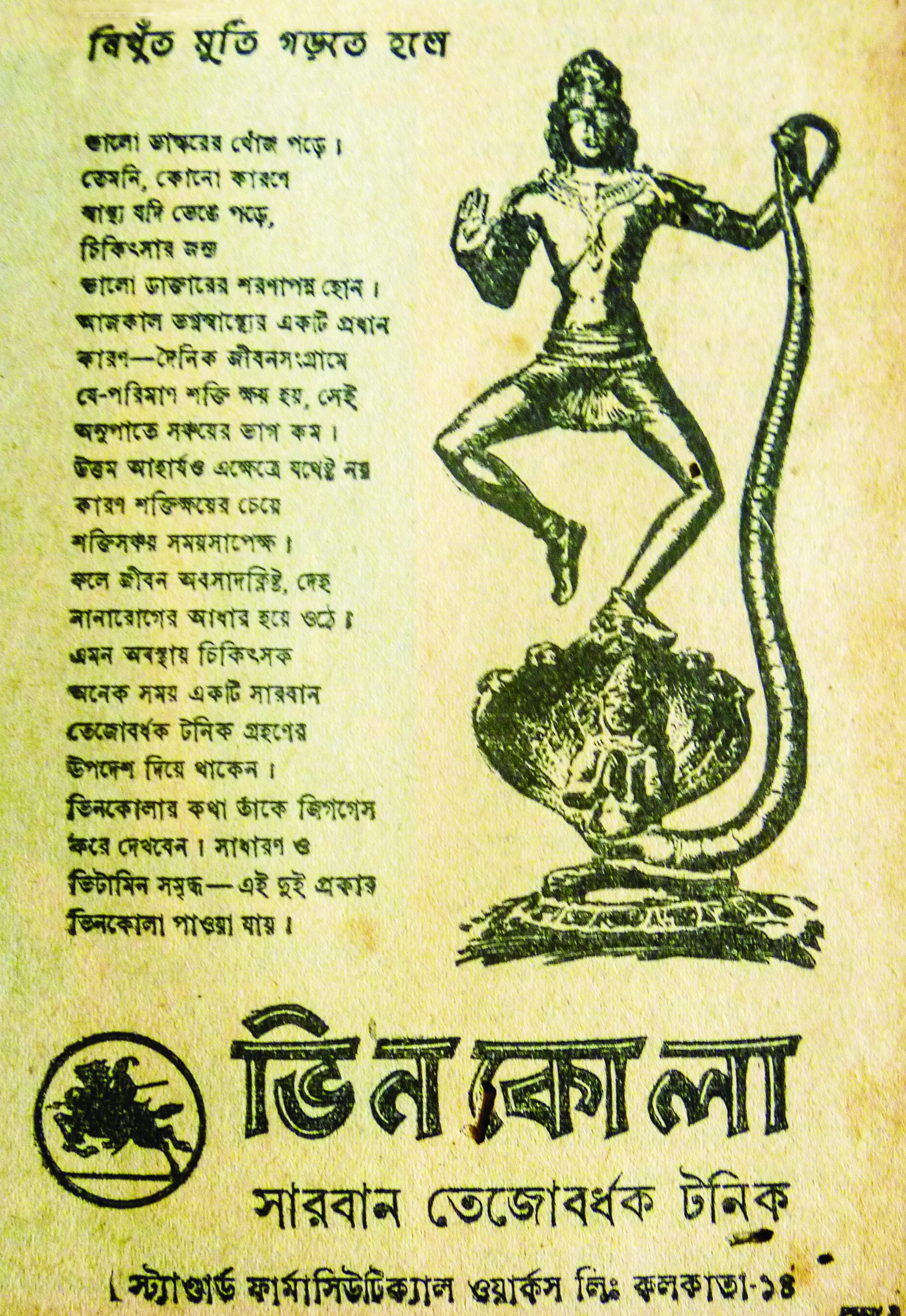
Advertisement for strength Tonic, during 1970s. Description compares
tonic with the perfect and skilled sculptor.
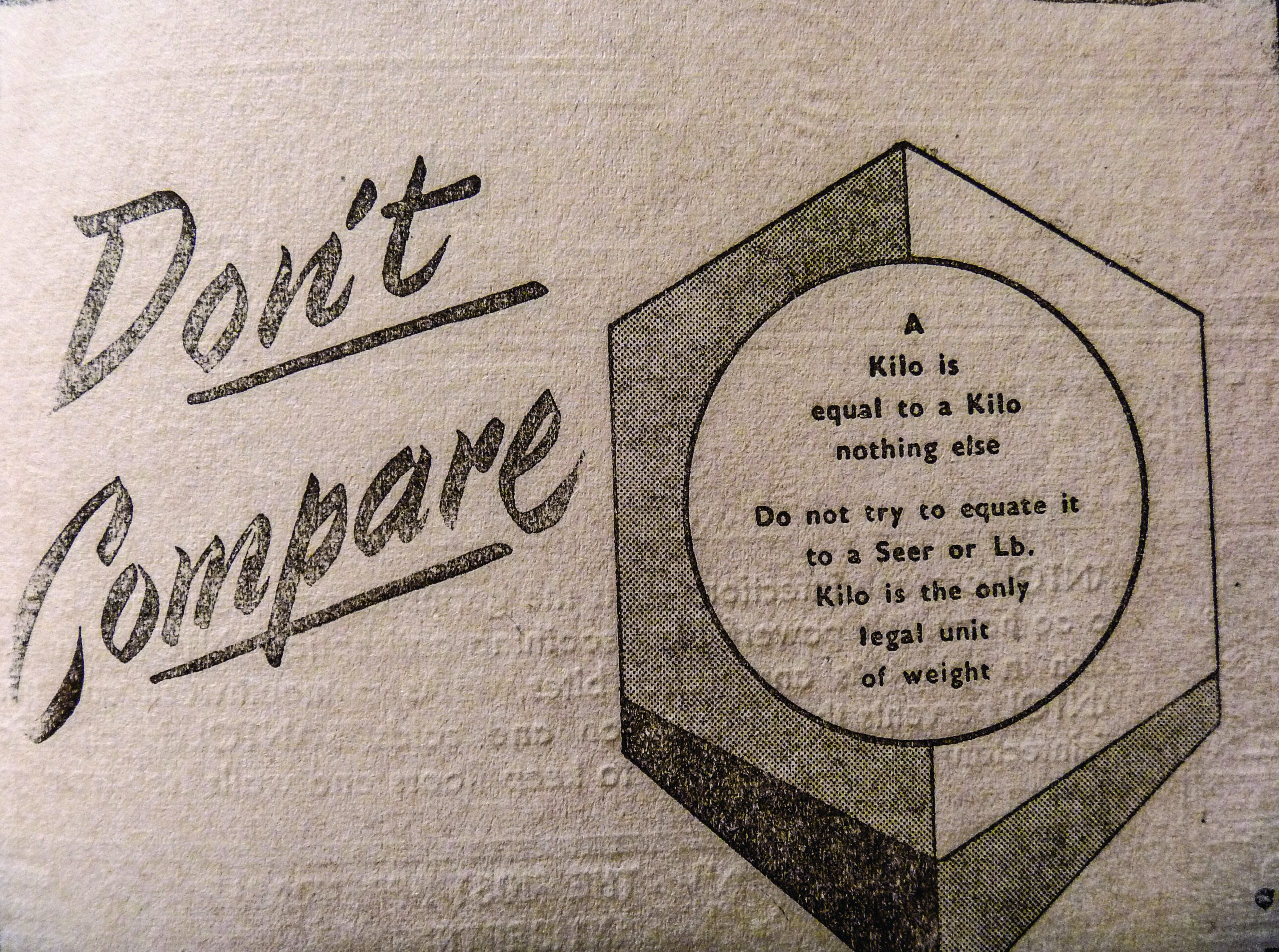
An advertisement of measuring
unit, published in a Bengali journal during 1970s.
Visual language cannot develop in a day or without process. Its evolution requires the construction of a detailed anatomy. This knowledge of anatomy needs inspirational words and influences reflected through the art-making process. My inspirations come from varied personalities, and many of the following fragments of words are deeply connected to my art practices. Here, I mention a few quotes from great individuals that guide me on my enduring journey in artistic practice. These words turn from hammers to paintbrushes and return to my memory again and again.

An extraordinary evidence to understand the value of archives during pre-
independent India. Nandalal Bose is preparing the Tagore collection under the
guidance of A.K. Comaraswamy. Pen-and-ink drawing by Nandalal Bos.
Image courtesy of DAG New Delhi.
Words of Swami Vivekananda
Knowledge is the parent of intuition, which like instinct, is also unerring, but on a higher plane. There are three grades of manifestation in living beings: (1) sub-conscious – mechanical, unerring; (2) conscious – knowing, erring; (3) superconscious – intuitional, unerring.10
Concentration is the essence of all knowledge; nothing happens without it. When the mind is concentrated and turned back on itself, all within us will be our servants, not our masters. Concentrate on the inner world, upon the unseen realms in the Self.11
Excerpts from a letter by Nandalal Bose
Oct 3, 1941/ Aswin 16, 1348/
Morning/ Santiniketan
… If one can have an accurate idea of how in limitless space everything grows, moves endlessly from form to that beyond the state… He can become nature’s poet or artist from concept to that beyond concept. There is a secret technique in painting. While trying to paint that tree one should not get lost in the complexity of its numerous details; one should paint its space. One will see that the tree has come into one’s grasp in full shape and structure; its form has blossomed forth…
The rasa (aesthetic essence) of tranquillity is the beginning and end of all rasas. Happiness or sorrow, love, hate or disgust, whatever the emotion or excitement, becomes the subject of art only when, within and above it, it attains a state of steadiness or poise, or impersonal balance.12
Visva Bharati Quarterly, Nandalal Centenary Number, Volume 49, Numbers 1-4, May 1983 – April 1984, Visva Bharati, Santiniketan, December 1987.
What is Painting? By Mahendranath Dutta
Painting is not merely drawing lines and enamelling the same with colour. Still, it is an acute psychological process that the painter himself very often overlooks.
The painting attempts to represent or reproduce a picture of the mind through colour and lines or by certain suggestions. For this reason, we have the vision; we visualise the ideas in a glaring form. We stop and compose our nerves and try to reach a calmness, a dignified attitude, and a sober state of mind. We select materials—colour and lines and attempt to represent through symbology what is passing inside the mind. One is ideal, and the other is representation. In this stage, the painter remains in a state of conscious trance. He tries his utmost through these suggestive representations to bring down the ideal within the observing faculty of persons or to raise the observer’s mind to the level and high pitch of his purpose. A few patches of colour and scratching of lines are mere means to reveal his mind to others, but scarcely does he succeed.13


